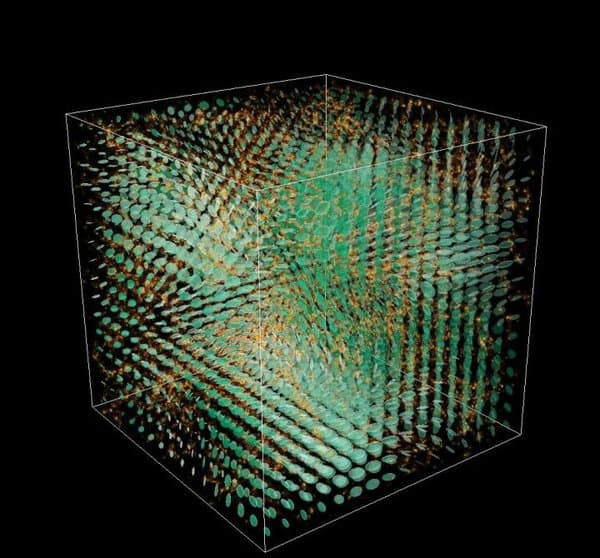Physicists ‘Relativistically’ Simulate The Expansion Of The Universe
Physicists from the University of Geneva (UNIGE), Switzerland have recently thrown new light on the theory of the ever expanding universe and the mechanisms involved in the process. Contemporary cosmology validates the notion of the metric expansion of space, i.e. increasing distance between two distant parts of the universe with time. The exact theory of the evolution of our universe is still shrouded in mystery and depends largely on a theoretical framework lacking strong computational proofs to back up the theory.
Recently, scientists were able to formulate an exact compact code that simulated the complex process of the formation of the universe. They even went on to integrate the rotation of space-time into their calculations and calculated the amplitude of the recently discovered, gravitational waves. Previously, scientists had to depend on simulations based solely on Newtonian gravitation to realize the universe. Such codes that were used previously which considered space itself to be static while time flowed, were able to achieve only an approximate result when objects were moving at relativistic speeds.

The gravitational waves generated during the formation of structures
Ruth Durrer’s team hailing from the Theoretical Physics Department of UNIGE have designed a code nicknamed gevolution, that has successfully incorporated the dynamicity of both space and time as proposed in Einstein’s pioneering General Theory of Relativity. To test the proposed method, a cubic portion with 60 billion stars has been considered as a sample space. Owing to the LATfield2 library and a Supercomputer from the Swiss Supercomputer Center in Lugano, the scientists were able to analyse the movement of particles and calculate the metric space using Einstein’s field equations.
By analysing the results obtained from the new code, scientists were able to draw comparisons between its predecessors that neglected the relativistic effects and the upgraded GTR incorporated simulation. The research will also give physicists an even better understanding of Einstein’s century- old theory of General Relativity, which is one of the pillars of modern physics. The complete research was published in the latest issue of the ‘Nature’ Physics journal.
Source: #-Link-Snipped-#
Recently, scientists were able to formulate an exact compact code that simulated the complex process of the formation of the universe. They even went on to integrate the rotation of space-time into their calculations and calculated the amplitude of the recently discovered, gravitational waves. Previously, scientists had to depend on simulations based solely on Newtonian gravitation to realize the universe. Such codes that were used previously which considered space itself to be static while time flowed, were able to achieve only an approximate result when objects were moving at relativistic speeds.

The gravitational waves generated during the formation of structures
Ruth Durrer’s team hailing from the Theoretical Physics Department of UNIGE have designed a code nicknamed gevolution, that has successfully incorporated the dynamicity of both space and time as proposed in Einstein’s pioneering General Theory of Relativity. To test the proposed method, a cubic portion with 60 billion stars has been considered as a sample space. Owing to the LATfield2 library and a Supercomputer from the Swiss Supercomputer Center in Lugano, the scientists were able to analyse the movement of particles and calculate the metric space using Einstein’s field equations.
By analysing the results obtained from the new code, scientists were able to draw comparisons between its predecessors that neglected the relativistic effects and the upgraded GTR incorporated simulation. The research will also give physicists an even better understanding of Einstein’s century- old theory of General Relativity, which is one of the pillars of modern physics. The complete research was published in the latest issue of the ‘Nature’ Physics journal.
Source: #-Link-Snipped-#
0
